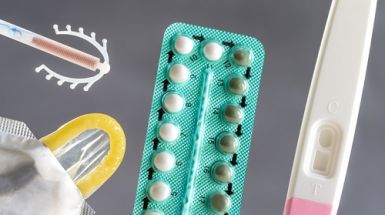Contraceptives, also known as birth control or family planning methods, aid in preventing unwanted pregnancies resulting from sexual intercourse. This comprehensive article provides detailed information about various birth control methods available for both men and women.
Choosing the right contraceptive method depends on various factors, including:
- Age
- Pregnancy planning timeline
- Relationship status
- Personal preferences
Contraceptives can be classified as hormonal, barrier, or a combination of both. While many options are temporary, some are permanent.
Get Instantly Update By: Joining Our Whatapps and Telegram Channel

Barrier Methods
These methods prevent the meeting of sperm and egg, thus preventing pregnancy.
- Male Condom:
A thin sheath covers the penis to collect sperm and prevent its entry into the woman’s body. Latex and synthetic condoms are commonly used. Some variations may not protect against STDs. - Female Condom:
A flexible plastic pouch inserted into the vagina before intercourse. It prevents sperm from entering the uterus and offers some STD protection. - Spermicide:
Substances that kill sperm cells. Available in various forms like foam, jelly, cream, or suppository. Used in conjunction with other methods. - Diaphragm and Cervical Cap:
Flexible, cup-shaped objects placed inside the vagina to cover the cervix. Used with spermicide. Size should be determined by a healthcare provider.
Hormonal Methods
- Oral Contraceptives (Combined and Progestin-Only Pills):
Daily pills that prevent pregnancy by inhibiting ovulation. Combined pills contain estrogen and progestin, while progestin-only pills have only progestin. - Contraceptive Patch:
Weekly patch releasing hormones into the bloodstream. Prevents ovulation and requires a patch-free week for menstruation. - Vaginal Ring:
Releases hormones that inhibit ovulation. Inserted into the vagina for three weeks, followed by a ring-free week. - Injectable Birth Control:
Hormonal injection administered every three months to prevent ovulation and block sperm-egg interaction. - Implant:
A thin rod inserted under the skin of the arm, releasing hormones to prevent ovulation and fertilization. - Intrauterine Device (IUD):
A small device placed inside the uterus, releasing hormones to prevent pregnancy for up to 3-6 years.
Sterilization
Permanent surgical methods to prevent pregnancy:
- Tubal Ligation:
Blocking or closing fallopian tubes to prevent sperm-egg meeting. - Vasectomy:
Surgery to block sperm from entering ejaculate.
Other Methods
Fertility awareness, lactational amenorrhea, and withdrawal methods are also used for pregnancy prevention.
Emergency Contraception
Used after unprotected intercourse or contraceptive failure. Copper IUD or emergency contraceptive pills can be used within a certain timeframe.

